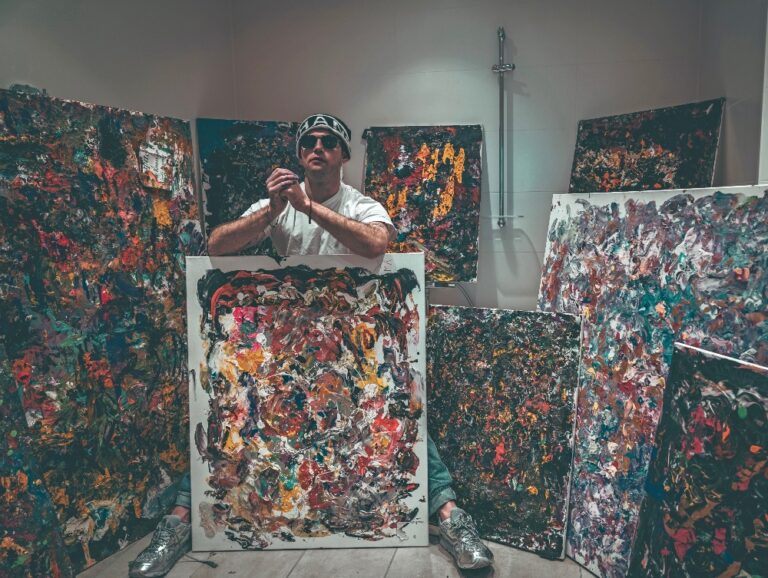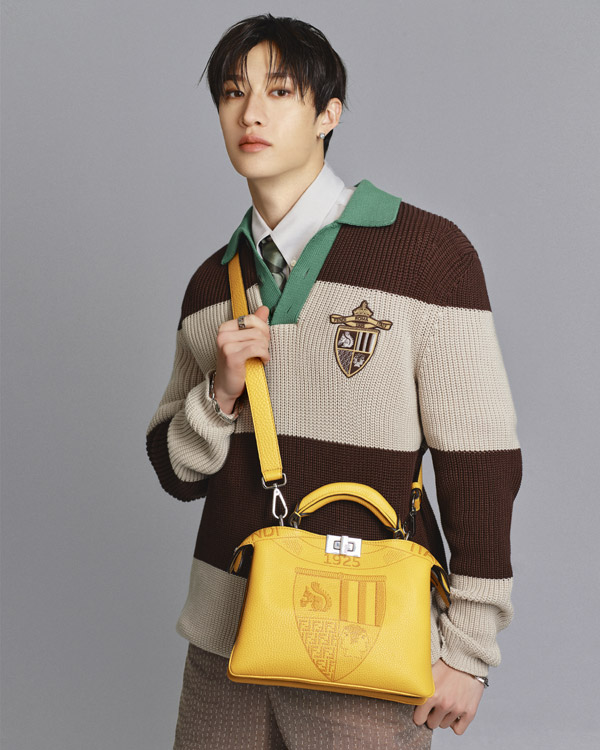Opinion: A Millennial’s Take on How Gen Zs Are Influencing Brands

Authenticity Vs Controversy
Advertising has always mirrored the values of its time. Millennials grew up in an era where advertising was driven by old-school marketing techniques — “sex sells” and controversy for controversy’s sake. The mantra was often “better to ask forgiveness than seek permission.” Hype was built around shock value, even if the campaigns bordered on the bizarre. Think of Balenciaga’s polarising stunts or Mschf’s viral “Big Red Boots”. Gen Z, on the other hand, refuses to play by those rules. Raised in the age of cancel culture and public accountability, they are sharper in their convictions — often polarised to the ultra-right or ultra-left — and unafraid to vote with their wallets. Their demands are clear — transparency, sustainability and authentic storytelling that reflects a diverse range of shapes, races and identities.
Unlike Millennials, who grew up on slogans and taglines, Gen Z communicates in movements and memes — a generation that speaks through TikTok dances rather than lengthy captions. Words carry weight and in an era where language can age poorly or be weaponised, expression through trends feels safer, faster and more powerful, even when the result appears “cringe.” It is not about the dance itself, but the cultural momentum it creates. This is exactly what made GAP’s “Better in Denim” campaign with Katseye successful.
Amasing over 20 million views in just two weeks, the video sees the girl group with diverse members from the Philippines, South Korea, Switzerland and the United States dancing to a cherographed performace to Kelis’ salacious 2003 anthem, “Milkshake”. Shortly after its release, fans on social media created their own reels and TikToks recreating the dance which only generated the buzz around the Gap campaign. This is a prime example of a successful marketing campaign. The combination of the video’s unapologetic self-expression added then with a choice of song taps into the ongoing cultural trend of Y2K nostalgia made the campaign culturally resonant.
Read More: Fashion Industry Banks on The Rise of Collectible Culture
TikTok dance recreations, tags and hashtags only amplify the cultural reach of a brand like Gap. In contrast, Sydney Sweeney’s controversial yet commercially successful American Eagle campaign leaned heavily on selling a sensual fantasy while playing on the pun: Sydney Sweeney has good “jeans” (genes). What was intended as cheeky wordplay quickly backfired, alienating segments of consumers who pushed the conversation into darker territory around eugenics and race. The campaign became polarising and in response to potential boycotts, far-right — largely white — consumers rallied behind it, reframing the controversy as a success and enforcing the notion that yes, Sydney Sweeney does indeed have good “genes”.
Read More: Gen Z’s Impact on the Future of Youth Culture and Consumer Trends
In response to the backlash American Eagle stated on their instagram that the campaign “is and always was about the jeans. Her jeans. Her story. We’ll continue to celebrate how everyone wears their AE jeans with confidence, their way. Great jeans look good on everyone” and at the time of writing, the videos and social media posts are still live, racking in millions in accumulative views. This has also proven to be a profitable play for American Eagle as the brand unviled it had seen a “double-digit increase weeks after the viral launch”.
The Fragmentation of Gen Z’s Tastes
So how does this relate to the realm of luxury fashion? Gen Zs lives at the intersection of ultimate convenience and unprecedented discontent, where food, therapy and dating are just a tap away — yet rising levels of loneliness, anxiety and dissatisfaction reveal the hollowness of abundance. Despite being the most connected, resource-rich generation in history, Gen Z’s declining happiness underscores the limits of convenience, revealing that deeper psychological and societal needs cannot be solved by technology or consumption alone and this has a trickle down effect in their consumer preferences. In short, they are spoilt for choice and this choice allows them to syphon their personal beliefs into the equation. These personal beliefs affect their placement in “micro-scenes”.
Read More: Influencer Marketing: Making Luxury Relatable for Gen Zs
Unlike Millennials, who were unified by a few mega-trends like minimalism or athleisure for instance, Gen Zs splinters across micro-scenes such as Y2K nostalgia, “gorpcore”, quiet luxury, “coquette aesthetic” or “blokecore” to name a few. Perhaps Millennials were beaten into societal submission of choosing “this” or “that”, Gen Zs refuse to fall into black and white categories. For luxury, this makes targeting incredibly difficult — a Dior bag may resonate with one sub-group, while another sees it as an example of overt indulgence and would prefer to shop the second-hand market instead.

Deloitte reports that Gen Z already makes up 25 percent of the global population — nearly 2 billion people — and will surpass baby boomers in spending power, reaching USD 21.6 trillion within the next five years. Yet, their consumer behaviour is far from monolithic. Unlike previous generations, their identities are shaped in real time by digital environments, where over 50 percent prefer creators over celebrities as sources of influence and user-generated content outperforms traditional media sevenfold.
Rather than a linear path to purchase, Gen Z moves through a nonstop discovery loop on social platforms, with 29 percent more likely to make same-day purchases via social commerce. However, brand loyalty is no longer guaranteed — over half of Gen Z expects seamless experiences across mobile, online and in-store touchpoints, and they are willing to pay more for this consistency. At the same time, Deloitte highlights a nine percent decline in apparel’s share of wallet among younger consumers, underscoring the shift toward polarised spending — either in premium tiers or discounted alternatives, with the middle ground eroding.
Read More: Gen Z Extremism: How “Authenticity” Fuels Radical Views
In this fractured ecosystem, personal beliefs and cultural affiliations weigh heavily on consumer decisions. 42 percent of Gen Z say they have influenced someone else’s buying decision, reflecting how micro-scenes and digital tribes set the tone for trends, rather than global mega-movements. For luxury, this makes resonance far more elusive — what sparks desire for one segment may represent exclusion or indulgence for another.
Luxury Plays Catch-Up: Creating vs Chasing Trends

So how do brands curtail this? In a bid to appeal to a range of consumers, luxury maisons unveil capsule collections, limited-edition releases and exclusive lauches tied to events and activations alongside cross-sector collaborations. If one release does not resonate with core consumers or the brand “signature”, well it is only limited to a month — no harm no foul. This then begs the question, are brands creating or following trends? Historically, brands set trends yet now, micro-influencers and TikTok subcultures dictate taste, fragmenting the market and it is the luxury brands left to scramble with the shift. Brands like Prada and Dior increasingly partner with digital creators (some with under 100k followers) to access niche communities — signalling a reversal where influence flows bottom-up, not top-down.
Brands particularly leverage the power of social media influecers when they are planning of a rebrand. Case in point, the aforementioned Gap campaign alongside UGGs and Crocs. As a brand, UGGs experienced a massive popularity decline in the 2010s, with its signature sheepskin boots widely considered “outdated” and “unfashionable”. The revival of UGGs relied on a multi-pronged strategy that not only shed the brand’s one-dimensional, boot-only image but also leaned into the wave of Y2K nostalgia — a trend it ironically helped shape in the first place. Crocs, by contrast, underwent a far more dramatic image overhaul, clawing their way back from being labelled a “crime of fashion”. Tapping Gen Z influencers like Bretman Rock was instrumental in this shift. Today, while Millennials may still scrunch their noses at a pair, Gen Z has embraced them as ironic, playful staples that blur the line between “ugly and cool”.

With polarising trends and even more polarising cultural views, brands realise they can no longer appeal (and appease) everyone. For Gen Z, the rules have shifted. Raised in a culture of accountability, they demand transparency, diversity and authenticity, while navigating digital spaces where influence is instant and fragmented. The tension between authenticity and controversy has never been more visible and brands are being forced to rethink what cultural resonance really means.
Read More: Luxury Spirits Brands Recalibrate Strategies to Appeal to a New Generation of Consumers
For more on the latest in luxury fashion and style reads, click here.
The post Opinion: A Millennial’s Take on How Gen Zs Are Influencing Brands appeared first on LUXUO.





